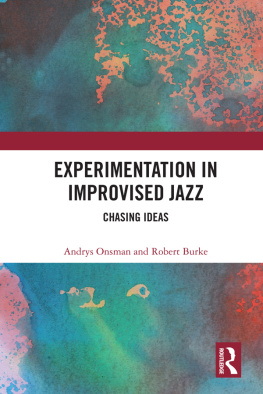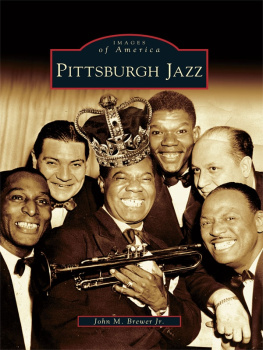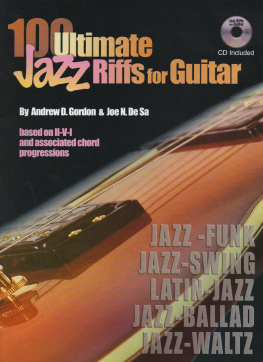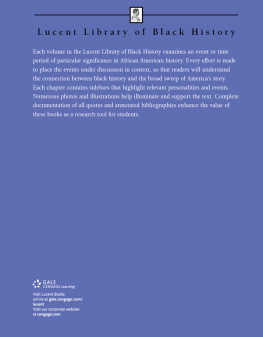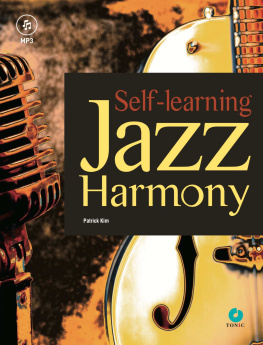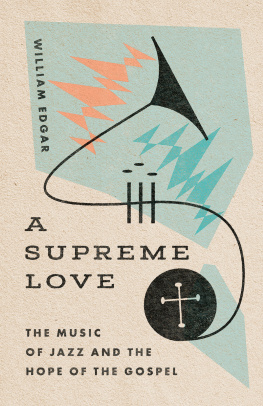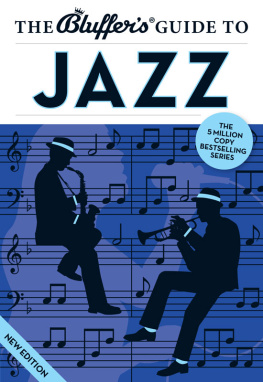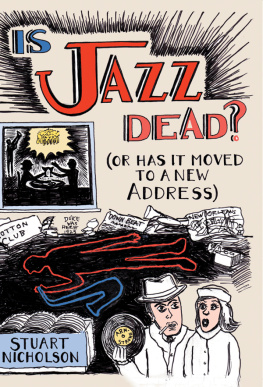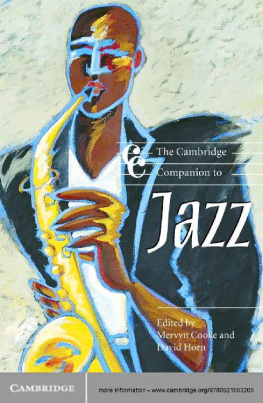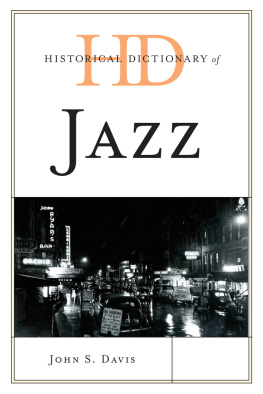Experimentation in Improvised Jazz
Experimentation in Improvised Jazz: Chasing Ideas challenges the notion that in the twenty-first century, jazz can be restrained by a singular, static definition. The worldwide trend for jazz to be marginalised by the mainstream music industry, as well as conservatoriums and schools of music, runs the risk of stifling the innovative and challenging aspects of its creativity. The authors argue that to remain relevant, jazz needs to be dynamic and proactively experimental, and consciously facilitate new ideas to be made accessible to an audience broader than the innovators themselves. Experimentation in Improvised Jazz explores key elements of experimental jazz music to discern ways in which the genre is developing.
The book begins with an overview of where, when and how new ideas in free and improvised jazz have been created and added to the canon, developing the genre beyond its initial roots. It moves on to consider how and why musicians create free and improvised jazzthe decisions they make while playing. What are they responding to? What are they depending on? What are they thinking? The authors analyse and synthesise the creation of free jazz by correlating the latest research to the reflections provided by some of the worlds greatest jazz innovators for this project. Finally, the book examines how we respond to free and improvised jazz: artistically, critically and personally. Free jazz is, the book argues, an environment that develops through experimentation with new ideas.
Andrys Onsman is an adjunct Associate Professor in the Sir Zelman Cowen School of Music, Monash University, Australia.
Robert Burke is an Associate Professor and Convenor of Jazz and Popular Studies at the Sir Zelman Cowen School of Music, Monash University, Australia.
Experimentation in Improvised Jazz
Chasing Ideas
Andrys Onsman and Robert Burke

First published 2019
by Routledge
711 Third Avenue, New York, NY 10017
and by Routledge
2 Park Square, Milton Park, Abingdon, Oxon, OX14 4RN
Routledge is an imprint of the Taylor & Francis Group, an informa business
2019 Taylor & Francis
The right of Andrys Onsman and Robert Burke to be identified as authors of this work has been asserted by them in accordance with sections 77 and 78 of the Copyright, Designs and Patents Act 1988.
All rights reserved. No part of this book may be reprinted or reproduced or utilised in any form or by any electronic, mechanical, or other means, now known or hereafter invented, including photocopying and recording, or in any information storage or retrieval system, without permission in writing from the publishers.
Trademark notice: Product or corporate names may be trademarks or registered trademarks, and are used only for identification and explanation without intent to infringe.
Library of Congress Cataloging-in-Publication Data
A catalog record for this title has been requested
ISBN: 978-1-138-31667-6 (hbk)
ISBN: 978-0-429-45551-3 (ebk)
Typeset in Times New Roman
by Apex CoVantage, LLC
Contents
Section 1
Free Jazz as a Sonic Construct
Section 2
Creating Free Jazz
Section 3
Responding to Free Jazz
Freedom: More Than Just Another Word for Nothing Left to Lose
What should we do with our brain? A question of neurological import that has existential significance far beyond the billions of neurons twinkling away inside our noggins. We could, no, we should! drench our brains, our bodies, our beings in music and all manner of creative pursuits. We should sing, dance, talk and engage in creative collaboration that enliven, invigorate and brighten up, not only our brains, but our lives. This bold assertion is not a utopian ideal, a woolly dream of lily-livered intellectuals and liberal academics, but the conclusion drawn by an increasing number of hard-nosed scientific researchers investigating the process and outcomes of creative engagement (MacDonald et al, 2012). Music is good for you. Jazz is good for you.
What should we do with our brain? is the title of Catherine Malabous (2008) text in which she draws on the vast strides made in brain-imaging techniques to pose philosophical questions on the nature of existence. She outlines research showing the brains remarkable plasticity and goes on to proposes different types of neurological, social and political freedom. The metaphor is clear in her writing: the brain has freedom to grow in ways we have never contemplated and so does every individual. This sense of freedom is just one of many links between Malabous text and this book. One of the most striking features of Burke and Onsmans innovative approach is the skilful and concise way they interrogate key issues relating to how free jazz is currently being practiced and discussed globally. The intersections of jazz and musicology, sociology, psychology, neurology and philosophy are expertly presented in such a way that the reader is easily drawn into the examples that are sophisticated and illuminating.
Notions of musical freedom, creative freedom and wider social conceptions of freedom are central to understanding the nature of free jazz and are core in the book. As the authors note, freedom takes many guises and is deceptively tricky to pin down. When Kris Kristofferson sang freedoms just another word for nothing left to lose, he signalled the relational aspects of freedom that lie at the heart of this slippery concept. Freedom is often an aspiration, a dream, a utopia that cannot be experienced but should be aimed for. If and when it is achieved, it is experienced in relation to what went before: free from societys constraints and rules; free from a damaging relationship; free from political shackles. The same can be said of free music, free jazz or free improvisation. The nirvana of musical freedom relates to a release from the constraints of other music that is perceived to be less free. Free from the arms of the conductor, the ego of the composer, the despotic notes on a page; free from the rhythmic and harmonic expectations of post-bebop contemporary jazz; free from the tyranny of the relentless snare drum pulse of a 4/4 meter. So the freedom here is related to the perception of other less-free musical situations. However, musicians playing free music are, of course, not free. There are responsibilities, expectations and conventions that must be met. The biggest responsibility may well be to other musicians. To use the freedom responsibly and engage with other musicians with respect and understanding. All freedom is relational, all freedom is contingent upon the musical and social situations in which the performance takes place. Therefore, free music requires significant individual responsibly partly because of the myriad of decisions to be made during its execution.
The decisions made by musicians when engaged in playing jazz are elegantly discussed in the numerous examples throughout the text. Whether it is Tony Malaby describing how he approaches performing, or George Lewis highlighting the political significance of our choices, improvisation can be thought of as a series of decisions to be made in real time. These decisions are defining features of improvisation (Wilson & MacDonald, 2016). For example, during an improvisation, a trumpet player must decide when to initiate new ideas or when to respond to rhythms of the drums or augment what the guitarist is playing. These decisions can be made consciously or unconsciously and they can also be made concurrently. Interestingly, these types of decisions are central to daily life and improvisation plays an important role in the ebb and flow of social interactions. A shopping trip becomes a series of improvisatory decisions: getting on a train; meeting a friend; social chit chat with the cashier in the supermarket. All these negotiated encounters have improvisation at their heart. When to initiate a conversation, when to respond to comments, when to introduce a new idea and when to end the encounter. Musical improvisation can therefore be viewed as sharing some key features with social life. Thus, when we are improvising, not only are we utilising specialist instrumental skills and musical knowledge, but we are also deploying social skills, skills relating to interacting in daily life, universally accessible skills. Thus, improvisation can be conceptualised as a universally accessible form of collaborative interaction (MacDonald & Wilson, 2015). A complex negotiation. Indeed, the earliest communication between a parent and a child can be thought of as a musical improvisation. The cooing and babbling and the interactions between newborn babies and their carers have more in common with musical improvisation than with natural language (Trevarthen, 2002). Thus, improvisation plays a fundamental role in the earliest and most important bonding relationship of our lives: the relationship with our parents. The patterns of interaction in those early weeks and months will have influence upon us for the rest of our lives. Thus, we are all musical and we are all improvisers.

